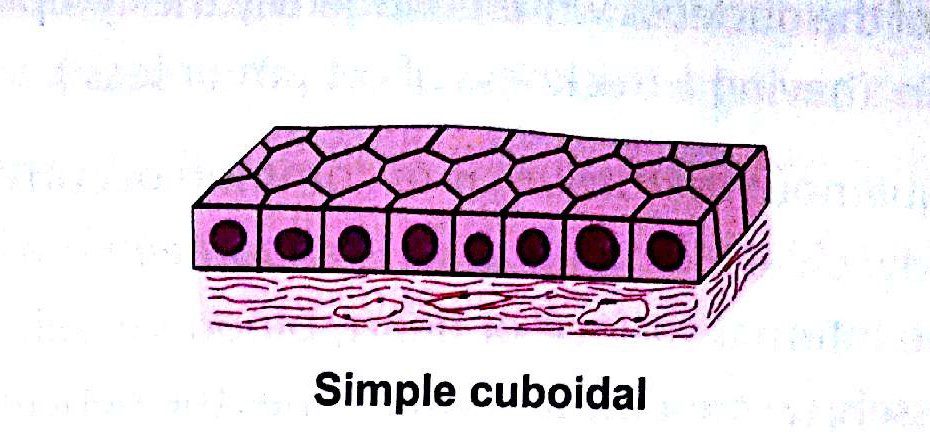EPITHELIUM
The epithelium is defined as a collection of closely apposed cells with a very small amount of extracellular matrix. All epithelia are supported by a variable amount of loose connective tissue which contains many blood vessels. Between the epithelium and the associated connective tissue, there is always present a sheet of amorphous material which is called basal lamina or basement membrane.

epithelium tissue
The basal lamina is never penetrated by blood vessels and, hence, the epithelial tissues are avascular because the epithelial cells never come in direct contact with blood capillaries. The epithelial cells receive oxygen and nourishment by diffusion (through the basement membrane) from the capillaries present in the underlying connective tissue. Epithelial tissues cover the external and internal surfaces of the body and form the parenchyma (functional part) of various glands.
Accordingly, the epithelia are customarily divided into two main groups: (1) glandular epithelia, and (2) covering epithelia.
GLANDULAR EPITHELIA
Some epithelial cells of the body are specialized to produce substances that differ in composition from blood plasma or intercellular fluid. These substances, which are generally fluid in nature, are not used by the cell itself but are expelled to the extracellular compartment. These products are either secretions or excretions; the secretions are utilized somewhere else in the body, whereas excretions are discarded from the body.
The process of secretion is usually accompanied by the intracellular synthesis of macromolecules. The synthesized materials are stored in the cell as small, spherical membrane-bound structures called secretory granules or secretor vesicles. The chemical nature of the macro- molecules synthesized by the epithelial cells varies. The glandular cells may synthesize lipids (e.g., sebaceous glands and suprarenal glands), proteins (e.g., pancreas), or complexes of proteins and carbohydrates (e.g., salivary glands).
The process of excretion does not involve intracellular synthesis of macromolecules but consists merely of a transfer of waste materials from the blood to the lumen of the glandular units. Chief examples of the excretory glands are kidneys and sweat glands.
COVERING EPITHELIA
The covering epithelial (also called surface epithelia) consist of one or more layers of cells, which cover the external body surface or line the tubular passages and cavities of the body. The most obvious example of the covering epithelia is the epidermis of skin, which is a multilaminar epithelium that covers the outer surface of the body.
Those spaces and passages that open on to the exterior (e.g., the respiratory, digestive and urogenital passages) are all lined by covering epithelia of different types. The internal (Luminal) surface of the heart, blood vessels, and lymph vessels is also covered by epithelium. The body cavities (I.e., the pericardial, plural and peritoneal cavities) are also lined by a special type of covering epithelium.








Leave a Reply